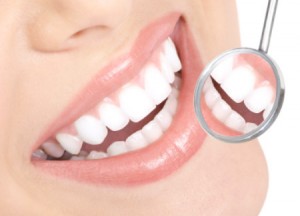 A dental bridge is a fixed appliance and is an excellent way to replace missing teeth. Bridges are restorations that fill in a gap caused by missing teeth. The gap left by a missing tooth can cause the remaining teeth to shift or move, and in some cases make speaking more difficult. It is important for your oral health to replace the missing tooth or teeth, and fixed bridges are one of the solutions for doing so. Bridges consist of artificial teeth and crowns, which are ‘caps’ that go over the teeth on both sides of the bridge and serve as anchors to stabilize the bridge. Traditional bridges are usually made from porcelain fused to metal or ceramics. They prevent the remaining teeth from shifting and provide a more stable surface for chewing. Dental bridges are highly durable and can last many years. They may, however, need to be replaced or re-cemented due to normal wear.
A dental bridge is a fixed appliance and is an excellent way to replace missing teeth. Bridges are restorations that fill in a gap caused by missing teeth. The gap left by a missing tooth can cause the remaining teeth to shift or move, and in some cases make speaking more difficult. It is important for your oral health to replace the missing tooth or teeth, and fixed bridges are one of the solutions for doing so. Bridges consist of artificial teeth and crowns, which are ‘caps’ that go over the teeth on both sides of the bridge and serve as anchors to stabilize the bridge. Traditional bridges are usually made from porcelain fused to metal or ceramics. They prevent the remaining teeth from shifting and provide a more stable surface for chewing. Dental bridges are highly durable and can last many years. They may, however, need to be replaced or re-cemented due to normal wear.
Reasons for a fixed bridge:
- Fill space of missing teeth.
- Maintain facial shape.
- Prevent remaining teeth from drifting out of position.
- Restore chewing and speaking ability.
- Restore your smile.
- Upgrade from a removable partial denture to a permanent dental appliance.
Getting a bridge usually requires two or more visits. First the teeth are numbed, then the two anchoring teeth are prepared by removing a portion of enamel to allow for a crown. Next, a highly accurate impression (mold) is made which will be sent to a dental laboratory where the bridge will be fabricated. In addition, a temporary bridge will be made and worn for several weeks until your next appointment.
At the second or third visit, your permanent bridge will be carefully checked, adjusted, and cemented in to achieve a proper fit.
Dental bridges can last 5 to 7 years. However, with good oral hygiene and regular professional cleaning, it is not unusual for the life span of a fixed bridge to be over 10 years.




